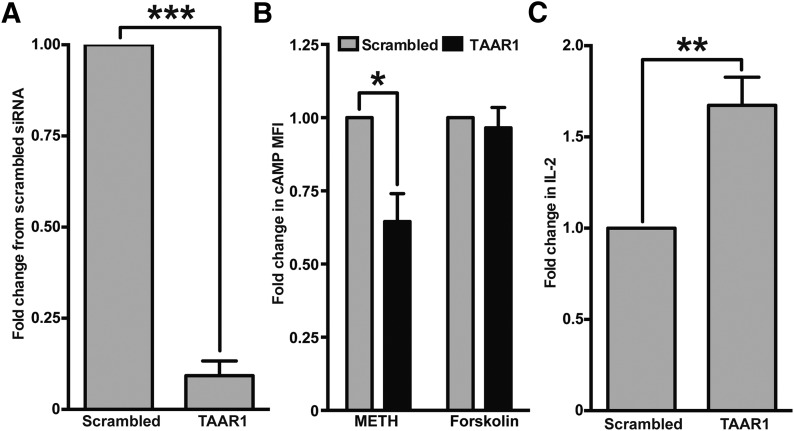Figure 5. The silencing of TAAR1 decreases METH-induced cAMP and increases IL-2 production in T cells.
Total PBMCs were treated with scrambled or TAAR1 siRNAs and cultured for ∼44 h in complete RPMI medium. (A) Cells were harvested at 44 h, and RNA was isolated for qPCR check for TAAR1 silencing. TAAR1 siRNA significantly knocked down the expression in PBMC. TAAR1 expression in scrambled siRNA versus TAAR1 siRNA; ***P < 0.001. (B) PBMC treated with siRNA was stimulated with METH (100 μM) or forskolin (100 μM) for 30 min–1 h, harvested and stained for CD3 and cAMP, and analyzed by flow cytometry. Results are expressed as fold change in cAMP MFI on CD3+ T cells in TAAR1 siRNA-treated PBMC versus scrambled siRNA-treated PBMC for each treatment. TAAR1 knocked down PBMCs showed significantly less cAMP expression compared with scrambled control siRNA (*P < 0.05), whereas forskolin-treated cells responded the same to both scrambled and TAAR1 siRNA. (C) Cells that were treated with siRNA were further treated with METH (100 μM) for 30 min and then stimulated with soluble CD3/CD28 antibodies and cultured for another 24 h. Supernatants were concentrated and analyzed for IL-2 by use of the MSD human IL-2 ELISA kit. The bar graph represents fold change from scrambled control. A significant increase (**P < 0.01) in the IL-2 levels was observed in the absence of TAAR1.

